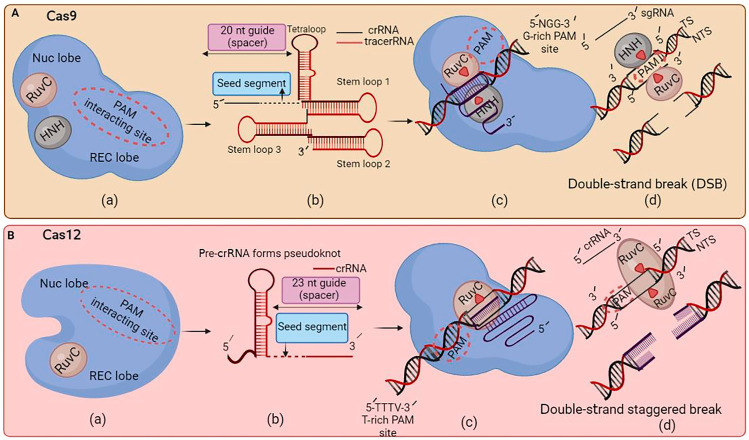Figure 1.
The critical differences between Cas9 and Cas12a are illustrated here. (A): (a) Cas9 has two endonuclease domains that, when activated, use the RuvC and HNH domains to target the target strand (TS) and non-target strand (NTS). (b) Cas9 needs tracrRNA for the synthesis of mature crRNA. (c) For the cleavage of the target site, the PAM of Cas9 requires NGG-rich areas. (d) Cas9 produces blunt ends while concurrently breaking both the TS and NTS. (B): (a) Cas12a uses RuvC, a single endonuclease domain, to cut the TS and NTS. (b) Cas12a generates mature crRNA without the assistance of tracrRNA. (c) The Cas12a PAM requirements are “TTN/TTTN”, with a preference for AT-rich areas. (d) Cas12a cleaves the NTS first, then the TS, resulting in a double-strand staggered break (sticky ends).

